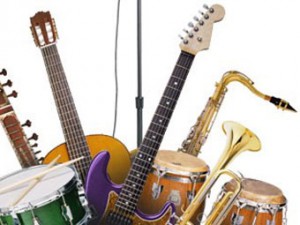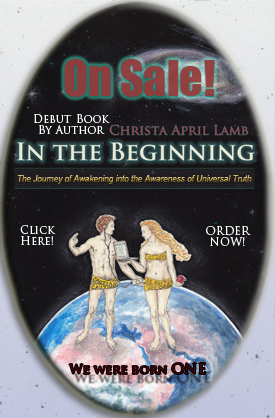Music from Canada

About:The music from Canada has influences that have shaped the country. Aboriginals, the British, and the French have all made unique contributions to the musical heritage of Canada. The music has subsequently been heavily influenced by American culture because of its proximity and migration between the two countries. Since French explorer Samuel de Champlain arrived in 1605 and established the first permanent Canadian settlements at Port Royal and Quebec City in 1608, the country has produced its own composers, musicians and ensembles.
Canada’s music industry has produced internationally renowned Canadian artists. Canada has developed a music infrastructure, that includes church halls, chamber halls, conservatories, academies, performing arts centers, record companies, radio stations, television music video channels.Canada’s music broadcasting is regulated by the Canadian Radio-television and Telecommunications Commission (CRTC). The Canadian Academy of Recording Arts and Sciences administers Canada’s music industry awards, the Juno Awards, which commenced in 1970.1
Similarities to other music styles:Canada and Australia are similar in various regards. Post-colonial in the sense that they are both former British colonies, they now each have more than a century of stature as nation states. By the beginning of the 21st century, they are each modest in size but rich in ethnocultural diversity. Nonetheless, each country has some skeletons in the closet where openness to difference, to indigenous and new immigrant groups are concerned. Both countries are similarly both experiencing rapid shifts in cultural makeup with the biggest population increases in Australia coming from China, India, and South Africa, and the biggest in Canada from Afro-Caribbean, South Asian countries, and China.2
Influences:The Music of Canada has reflected the multi-cultural influences that have shaped the country. Aboriginals, the French, and the British have all made contributions to the musical heritage of Canada. Since French explorer Samuel de Champlain arrived in 1605 and established the first permanent Canadian settlements at Port Royal and Quebec City in 1608, the country has produced its own composers, musicians and ensembles. From the 17th century onward Canada has developed a music infrastructure, that includes church halls, chamber halls, conservatories, academies, performing arts centers, record companys, radio stations and television music video channels.The music has subsequently been heavily influenced by American culture because of its proximity and migration between the two countries.3
DISCOVER MORE
Article from Nat Geo Music
When it comes to pop music, Canada is known for having produced an inordinate amount of mega-divas (Anne Murray, Celine Dion, Alanis Morissette, Shania Twain, Sarah McLachlan, Diana Krall, Avril Lavigne, k.d. lang). Yet one can also find distinctive folk and indigenous musical genres in various regions of the country. And, given Canada’s sheer size, keeping abreast of the music coming out of the these regions can be a challenge even for Canadians with a keen interest in homegrown talent.
Ever since the province of Québec produced its first recordings in 1922, the province has followed its own musical course. But things took longer to develop elsewhere. By the 1960s ambitious English-speaking folk and pop performers began moving South to pursue success in the United States. But for every Joni Mitchell and Neil Young there were others, such as Gordon Lightfoot and Bruce Cockburn, who found comfortable niches for themselves back home. For many songwriters whose songs reflected a strong sense of place (Stan Rogers, Gilles Vigneault) the very idea of moving elsewhere seemed anathema to their integrity.
With the advent of government regulations in the 1970s radio stations were forced to broadcast more Canadian music and these new rules served as a counterforce to the influx of irrepressible pop music spilling across the border. A wider array of Canadian artists began to thrive and the ripple effects that were first felt in popular music gradually seeped into other musical genres.
Although 90% of Canadians live close to the U.S. border, those who live in more isolated communities create music that is especially reflective of a local cultural identity and of the landscape with which they interact. Canada’s North, for example, is a huge expanse of land and while there seems to be a surprising number of good musicians and singers who have moved “up there” there are also communities where one can still find traditional Inuit throat singers, besides First Nations music. Although most of these performers stay close to home, some innovative performers, such as Tanya Tagaq, Taima, Susan Aglukark, Kashtin, have also drawn considerable attention to their work beyond the Northern regions.
Another Canadian region with a distinct musical identity is Cape Breton, which is widely known for the quality of its music, especially traditional fiddle music. Newfoundland also has a rich musical legacy, one that’s mostly influenced by the British Isles, and in the 1970s a group called Figgy Duff and a few other musicians were responsible for generating interest in the old repertoire.
Prince Edward Island has produced its own particular style of fiddling, one that has been well-documented by Ken Perlman, a well-known American folk musician and folklorist. Although none of them were actually born in the province, three of Canada’s most famous musical icons have been closely connected with the island: songwriters Gene MacLellan and Stompin’ Tom Connors, and fiddler/band-leader Don Messer, none of whom seemed interested in careers beyond Canada.
New Brunswick has developed a rich pool of musical talent in recent years. Acadian talent has also blossomed in the only officially bilingual province, with several French language songwriters, folk-rock groups, and young fiddlers catching the limelight in recent years. The neighboring province of Québec has been amazingly prolific for decades, although much of the country has remained woefully unaware of most Québecois artists. Most popular forms of music are well represented and the rich repertoire of traditional music is currently being rediscovered by a new generation of singers and musicians. La Bottine Souriante has kept the flame lit for several decades but that influential and innovative group is only one of many.
Many fine accordion players and fiddlers have come out of Québec, the late Jean Carignan even recognized as one of the greatest fiddlers of the 20th century. Of course fiddle music abounds throughout the country, with many local styles found in the Maritimes (Down East style), in the Ottawa Valley (old-time style fiddling and step-dancing), and in Manitoba (the native and Métis fiddling).
The contribution of the Prairies to the national music scene is less obvious at least partly because the population is less dense. Consequently, a large proportion of the tens of thousands of old folk songs collected have come from the eastern part of the country. Although their national profile is low, some performers of Ukrainian descent still keep their music and dance traditions alive in the Prairies, as do the aboriginal people (songwriters, powwows). A few good singers of cowboy songs (Ian Tyson, Corb Lund) also live in Alberta, which is where some of the world’s best folk festivals also take place.
Interesting hybrids have appeared on the scene in Canada’s larger cities. Toronto, where the country’s recording industry is mostly located, has an especially diverse music scene. Artists such as Eval Manigat (Haiti) and, more recently, Corneille (Rwanda) have made their mark on Montreal. Even Halifax, a smaller city, has good salsa, African, and Gypsy swing bands. In recent decades, Vancouver has attracted tens of thousands of immigrants and such groups as The Orchid Ensemble and Tandava (an off-shoot hybrid of Indian and oriental styles) are a natural by-product of that influx of newcomers.
Although Canada’s bilingual and bicultural divide was baptized as ‘two solitudes’ in 1945 by author Hugh MacLennan, it’s nonetheless a country where French and English are officially recognized as of equal value and status. Tandava was described on the CBC TV network as “a metaphor for Canada in the 21st century.” The fact that the country is now one of the most multicultural countries in the world – a country once referred to as a ‘cultural mosaic’, as opposed to the proverbial melting pot of its Southern neighbor – is bound to enrich the ‘two solitudes’ in ways that are yet to be imagined.
VIDEOS
Canadian Fun Song
Source:
1.Music of Canada, Wikipedia: http://en.wikipedia.org/wiki/Music_of_Canada
2.Post-Colonial Distances: The Study of Popular Music in Canada and Australia
Editor: Bev Diamond, Denis Crowdy and Daniel Downes. Date Of Publication: Dec 2008, Cambridge Scholars Publishing: http://www.c-s-p.org/flyers/Post-Colonial-Distances–The-Study-of-Pop-Music-in-Canada-and-Australia1-4438-0051-1.htm
3.Culture of Canada, Wikipedia: http://en.wikipedia.org/wiki/Culture_of_Canada#Music
4http://worldmusic.nationalgeographic.com/view/page.basic/country/content.country/
canada_24/en_US









